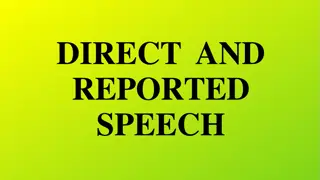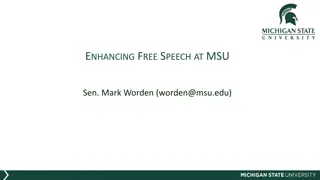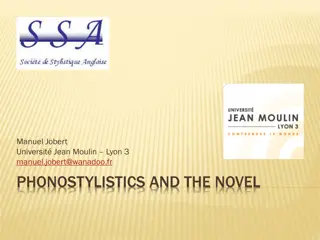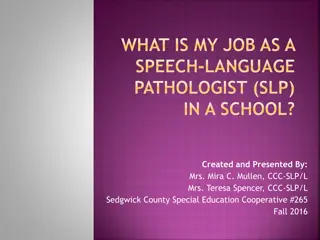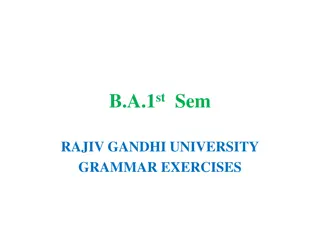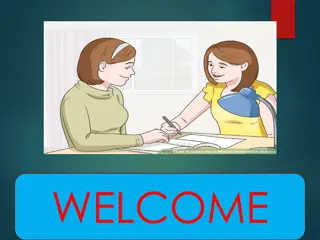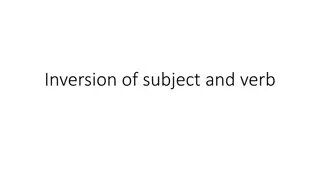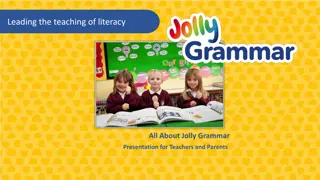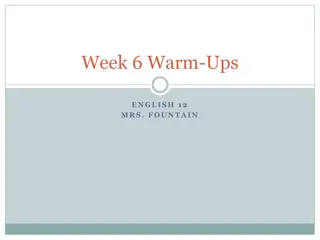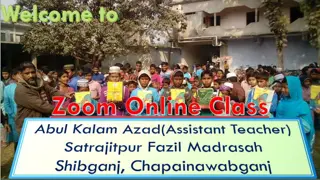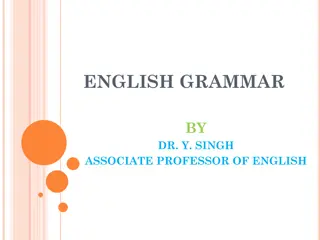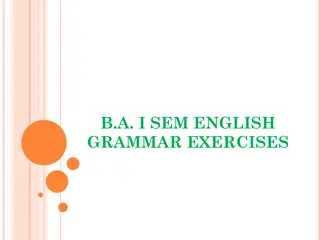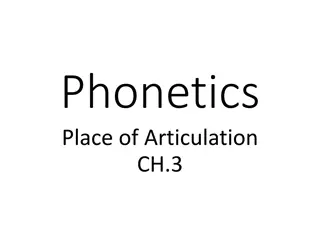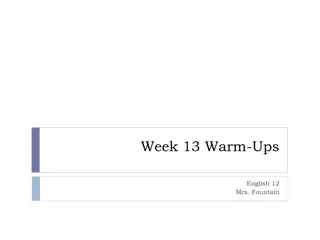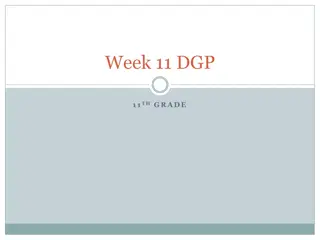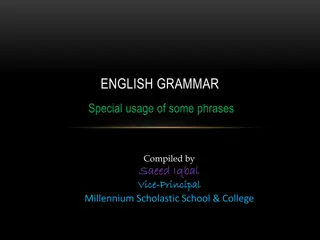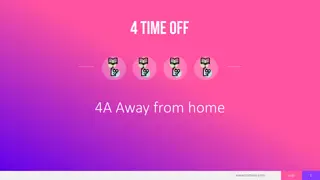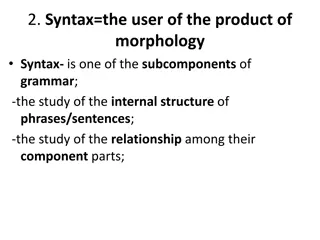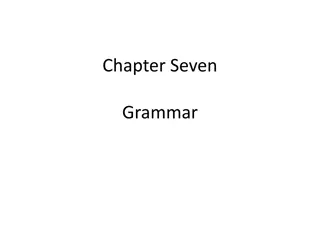Understanding Parts of Speech in English Grammar
Learn about nouns, verbs, and their types in English grammar, with explanations and examples. Enhance your understanding of identifying and using different parts of speech effectively in sentences.
Download Presentation

Please find below an Image/Link to download the presentation.
The content on the website is provided AS IS for your information and personal use only. It may not be sold, licensed, or shared on other websites without obtaining consent from the author. Download presentation by click this link. If you encounter any issues during the download, it is possible that the publisher has removed the file from their server.
E N D
Presentation Transcript
UNIT 1 & BAD BOY By Walter Dean Myers
Chapters 1 and 2: Annotations What am I looking for? Definitions Lists, features, causes, effects, characteristics, reasons Names, dates, events that are key Examples of main idea Good summary of the passage Good test questions of the passage Something you didn t understand How do I annotate it? Def. * [ ] 1. (done in the text/margin) 2. Underline or (circle) ex (in the margin) { (in the margin) T.Q. (in the margin) ?? (in the margin or the text)
Noun A noun names a person, place, thing, or idea. Whatever exists can be named, and that name is a noun. girl, dog, house, car, school, classroom The dog was fat. The house caught on fire. A proper noun names a specific person, place, or thing Carlos, Queen Marguerite, Middle East, Jerusalem, Malaysia, Presbyterianism, Spanish, the Republican Party is almost always capitalized. You are attending Lone Star Middle School. Olivia loves to sleep all day.
Verbs carries the idea of being or action in the sentence Action verbs: Words that tell what the noun does The students passed all their courses. Josie jumped over the fence. She runs out on the field when she plays soccer. Sally ran across the road. State of being verbs: Linking Verbs: Words that show that the noun exists and link them to the rest of the sentence I am a student. They are happy when he is outside. Helping Verbs (auxiliary): Help show you the action (will, shall, may, might, can, could, must, ought to, should, would, used to, need ) I have finished my dinner. I might go to the movies.
Pronoun refers to a noun, an individual or thing whose identity is made clear earlier in the text. (the pronoun's antecedent) Replaces a noun He, she, it, they, we, them, your, which Bob likes to eat chocolate. He also enjoys watermelon. Jane and Dolly love to bake cakes. They enjoy baking lemon the most.
Adjective words that describe or modify the noun or pronoun in a sentence The Articles a, an, and the are adjectives Blue car Old tractor Rusty sign Small boat the tall professor the small mouse a solid commitment a month's pay a six-year-old child the unhappiest, richest man
Adverb words that modify verbs or adjectives in a sentence often tell when, where, why, or under what conditions something happened. Usually end in ly (most of the time, not always) a verb (He drove slowly. How did he drive?) an adjective (He drove a very fast car. How fast was his car?) an adverb (She moved quite slowly down the aisle. How slowly did she move?) Cheerfully, lightly, beautifully, now, first, last, usually, always, today, tomorrow, only
Interjection words or phrases used to exclaim or protest or command Express an emotion Usually are followed by , or ! Wow, oh, hooray, excuse me, hey, shh, yes, duh, Wow! I won the lottery! Excuse me class, be quiet! Shh, the boy is reading. Hooray! We are out of school! Congratulations! You graduated from college!
Conjunction Is a joiner, a word that connects (conjoins) parts of a sentence And, but, or, so, for, nor, yet Jacob likes to play basketball, yet his favorite sport is tennis. Lone Star Middle School is the best middle school in Idaho, so that is why I am attending school there. I have an itch on my back, but I cannot reach it. Sally loves to bake brownies with her mother, and sometimes her little sister will help. That is neither what I said nor what I meant.
Preposition Word used to show a relationship between a noun or pronoun and some other word in a sentence Specify a place, direction, or time something happened. telling when or where or under what conditions something happened. On, above, across, beneath, outside, toward, below, by, during, onto, under, within, without, between, down, from, in, throughout, at The book was under the desk. (shows relationship between book and desk) The boy fell in the lake without a life jacket. Christine walked toward the school building. I had to crawl beneath the old dirty house.
Prepositional Phrase Consists of a preposition, its object, and any modifiers of the object. The object of the preposition is the noun or pronoun following the preposition. People communicate in many ways. Preposition: in Object: ways Prepositional phrase: in many ways. The children laughed at the clown. People enjoy talking with one another.
Chapter #3 Let's Hear it for the First Grade Now that you learned the parts of speech you need to identify them within your reading: list the page number in which it was found in parenthesis ( ). Ex: pronoun: us (1) Identify the following in the chapter: 4 nouns 4 verbs 4 pronouns 3 conjunctions 2 prepositions 4 adjectives 2 adverbs
SENTENCES AND PUNCTUATION
Clauses A group of words that contain both a subject and a verb Independent: expresses a complete thought and can stand alone as a sentence. (main clause) - contains subject and verb The gardener calculated the total area. Dependent: contains a subject and verb, but does not express a complete thought. after she measured the plot carefully
Simple Sentence Has one independent clause and no dependent clause. The fish swam. The little girl danced. The boy and girl walked to school. The boy loves to play basketball and baseball.
Compound Sentence consists of two or more independent clauses joined together, but no dependent clause. May be joined by a coordinating conjunction or a semicolon. Coordinating conjunctions: Susie loves to go to the store by herself, but she would rather have someone go with her. The dog barked; the cat screeched. for and nor but or yet so The girl didn t want to go to the water park, so she decided to stay home. FANBOYS
Complex sentence Subordinating conjunctions: consists of one independent clause and one dependent clause - Introduced with a subordinating conjunction after although as as soon as because before even though if since than though unless until when whenever Wherever which while The dog barked although he was well fed. The boy cried because he lost his tooth. The squirrel jumped out of the tree when he saw a cat climbing it. Although every sport involves some risk, people who take part in extreme sports face a higher-than-average level of risk.
Compound-Complex sentence has two or more independent clauses and one or more dependent clauses. Many people claimed that they had seen ghosts in the windows, and others believed them. As soon as the duck quacked, the frog jumped on the lily pad, and the rooster crowed.
Punctuation Interrogative: (?) asks a direct question or requests information Where did the dog hide his bone? Exclamatory: (!) shows a strong emotion (interjection) Wow! You are an awesome teacher! Imperative: (.) gives a command or ask someone to do something Clear the table for dinner. Declarative: (.) declares a statement or states a fact The bus was late to school.
Chapter #4 Arithmetic Summer Identify the following in the chapter and write the page number in which it was found. (focus on key examples from the text) Ex: Simple sentence: Each of us is born with a history already in place (1). 2 compound-complex sentences 2 compound sentences 2 complex sentences 2 nouns 2 verbs 2 pronouns 2 conjunctions 2 adjectives 2 adverbs 2 prepositions Explain a time in your life when you had surgery or when someone you know had surgery. How did you feel? What did you go through? (answer using and underlining at least 1 compound- complex sentence, 1 complex sentence, and 1 compound sentence)
Chapter #5 Bad Boy 1. On page 35-36, Walter takes a step back from his own life to give a description of the broader political and cultural climate of 1947. Is this good for someone to do when writing a memoir? Explain in 4-5 sentences why or why not? 2. Why does Walter prefer his name to be Walter Myers? 3. In this chapter we are introduced to Walter s bad behaviors. What bad behaviors did he do, and do you think he understood the seriousness of his actions? Do you think he should have been more severely punished for these behaviors? 4. In what ways is Walter s community sensitive to racial differences? In what ways is it insensitive to racial differences? 5. Who is the subject of Walter s first published poem? 6. Describe in 2-3 sentences (underline 1 compound-complex) how bullying can negatively impact the person who is being bullied.
Chapter #6 Mr. Irwin Lasher In Mr. Lasher s sixth-grade class, Walter s grades and behavior improved. Why do you think Walter does better in this class than in previous classes? Why do you think Walter tells his father that his mother beat him rather than admitting the truth-that he was injured trying to hitch a ride on a taxi? Do you think Walter s lie is justifiable and why? (Explain each question in 4-5 sentences; underline 1 compound, 1 complex sentence)
Chapter #6 Mr. Irwin Lasher What makes a good teacher?
TEXTUAL EVIDENCE AND IN-TEXT CITATIONS:
Why do you need to cite information? When you are writing a paper that includes information from a source, you must give credit to the person who wrote it.
There is 3 ways to cite information Quoting: Writing a direct line from a text Paraphrasing: Writing information from a text in your own words Summarizing: Writing a summary on an entire text in your own words
NO matter which way you cite your information, you must give credit to the author who originally wrote it Quoting: the use of direct words that is identical to the original, therefore matching the source document word for word. quotation marks (author s last name page number). Each of us is born with a history already in place. There are physical aspects that make us brown-eyed or blue- eyed, that make us tall or not so tall, or give us curly or straight hair (Myers 1). According to Myers, Each of us is born with a history already in place (1).
Paraphrasing: the use of a passage from the source document into your own words, therefore it usually is shorter than the original passage, taking a somewhat broader segment of the source and condensing it slightly. Paraphrase (page number). Everyone is unique in their own way, whether it s how we look or how we act, we are each born with a history all ready in line for us (Myers 1).
Summarizing: the use of putting the main idea(s) into your own words, which includes only the main point(s). Like a paraphrase it will be significantly shorter than the original document; takes a broader overview. Walter Dean Myers faced many obstacles his life, but racial discrimination in the biggest obstacle he faced. After reading the book Bad Boy, I was able to see how he struggled growing up. Even though he made some bad decisions, he never let himself see his skin color, nor did that stop him from following his dream to become a writer.
Chapter #7 I Am Not the Center of the Universe After you and finished annotating, answer questions the questions below in 3 or more complete sentences. To support your answers for questions 1 and 3, cite textual evidence (quotation) and use an in-text citation. Ex: Each of us is born with a history already in place (Myers 1). 1. What challenges did Walter go through to help him grow/mature to discover a new identity for himself? (quote three examples) 2. Does it always take extreme circumstances to overcome a challenge? Explain why or why not? 3. What role did self reflection play in Walter s personal growth? (one quote example)
Point of view Who is telling the story/ How the story is being told First person: shows the action through the eyes of one of the characters. This character, narrator, uses the pronouns I, me, my, our, and us. Second person: has a narrator who uses the pronoun you to address the reader directly Third person: has a narrator who does not take part in the action of the story and who uses the pronouns he, she, him, her, they and them when describing the characters. Omniscient: a method of storytelling in which the narrator knows the thoughts and feelings of all of the characters in the story Limited: the narrator knows the thoughts and feelings to one character's perspective.
Authors style How something is said or written (not what is said) When thinking about style, first consider the clothes people wear, like we looked at with labels. Whatever they wear, people choose clothes to express themselves and their own personal style. Authors have style too, but it's not a clothing style, it s called literary style. Writers express their ideas in specific ways by using just the right word and putting it in just the right place. A literary style reflects the author's personality and the purpose for their writing. It s not what they are saying, but how they are saying it.
Style How something is said or written (not what is said) Word choice Sentence length Figurative language Tone
Authors Purpose An author s purpose is the reason an author decides to write about a specific topic. Persuade Inform Entertain Explain (gives ideas to the reader)
Chapter #10 Heady Days at Stuyvesant High In 3-4 paragraphs re-write an event in this chapter from another character s (Florence Dean, William Dean, or Herbert Dean) perspective or point of view. How does POV change the overall feel of the story? Is the story being told differently than how Walter is telling it? How so? Describe, in 2-3 sentences, Walter s writing style in this chapter.
Chapter #10 Heady Days at Stuyvesant High In 3-4 paragraphs re-write an event in this chapter from another character s (Florence Dean, William Dean, or Herbert Dean) perspective or point of view. How does point of view change the overall feel of the story? Is the story being told differently than how Walter is telling it? How so? Chapter #11 The Garment Center 1. Write a summary for this chapter. (make sure to introduce the author) 2. Describe, in 2-3 sentences, Walter s writing style in this chapter. 3. Cite two pieces of textual evidence to support why Walter was doing bad in school. Remember to use a direct quotation and an in-text citation to support your answer. Also, support your textual evidence with 2 sentences explaining how Walter was doing bad.



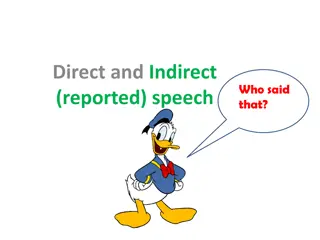
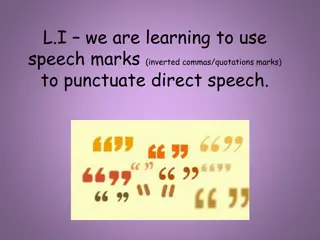

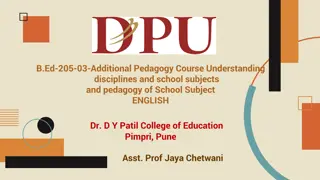
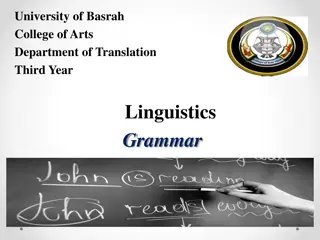



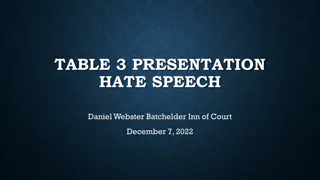

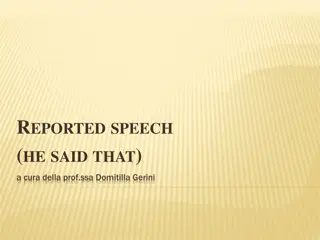
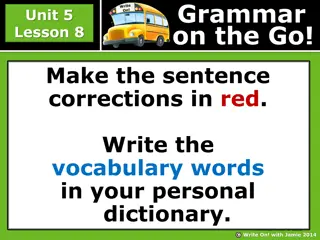
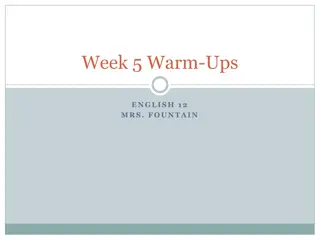
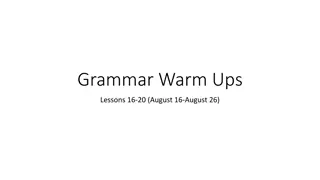

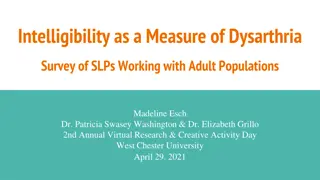
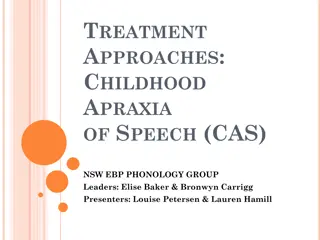
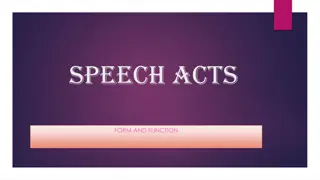
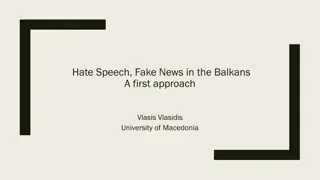
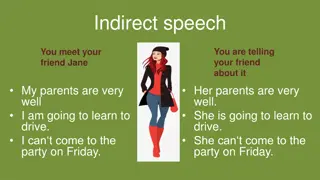
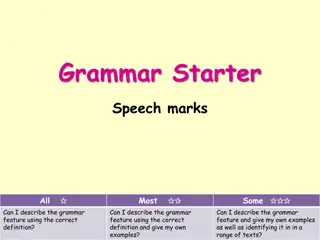
![Prevention and Combating of Hate Crimes and Hate Speech Bill [B.9B.2018]](/thumb/60513/prevention-and-combating-of-hate-crimes-and-hate-speech-bill-b-9b-2018.jpg)
